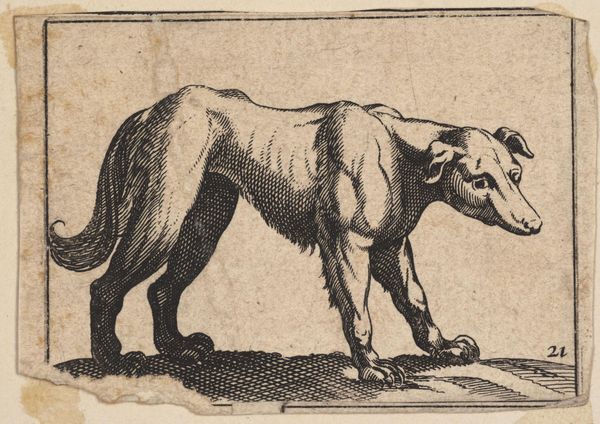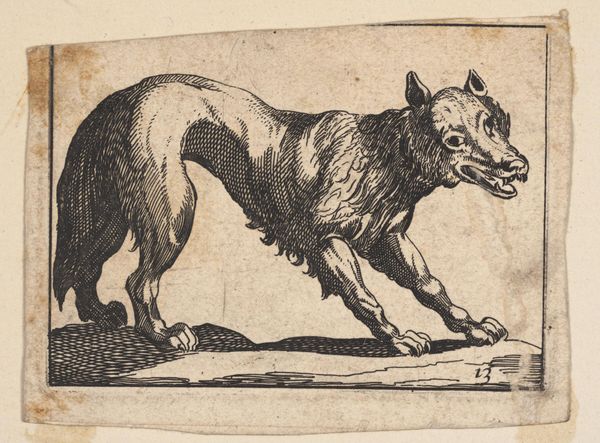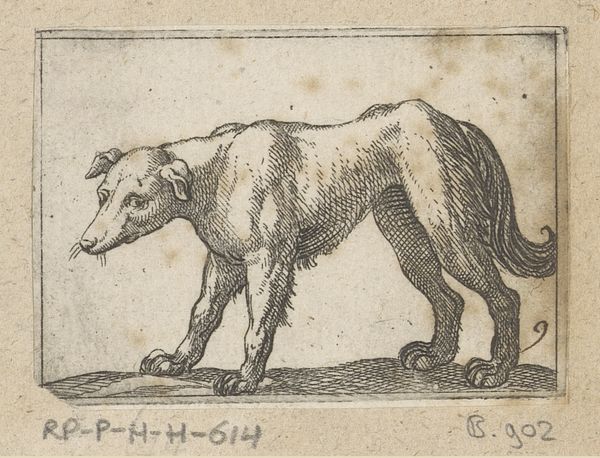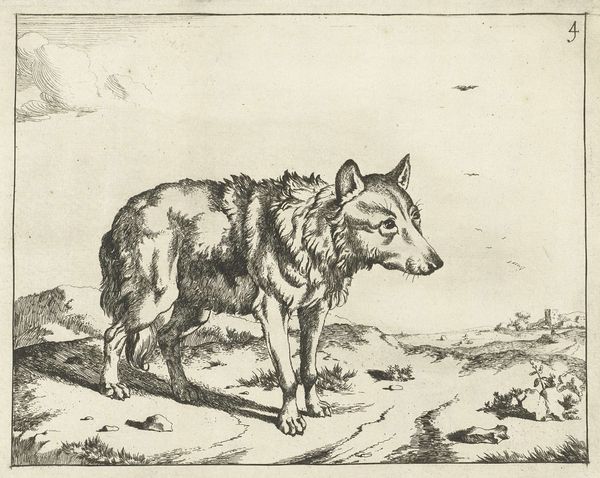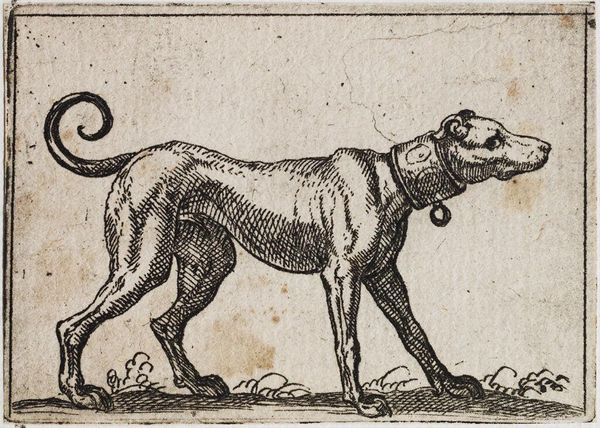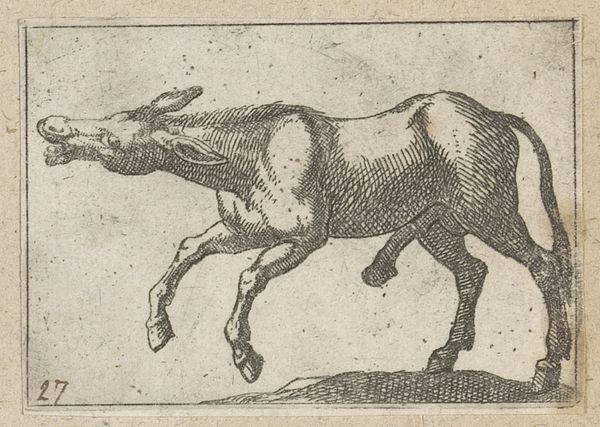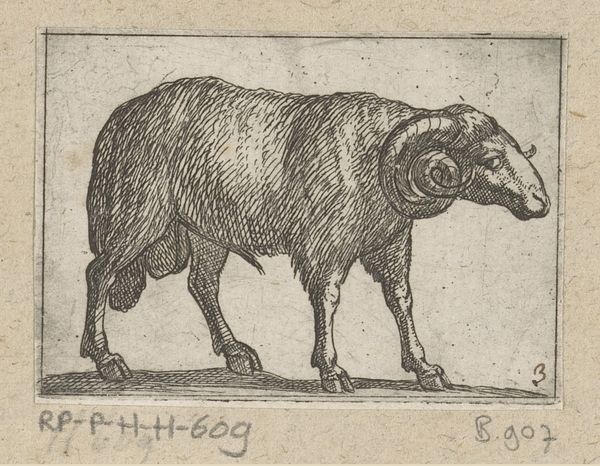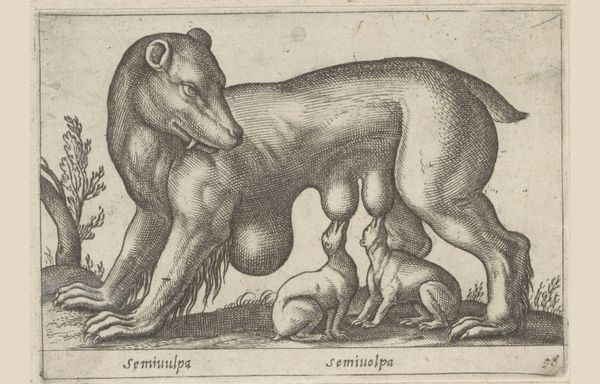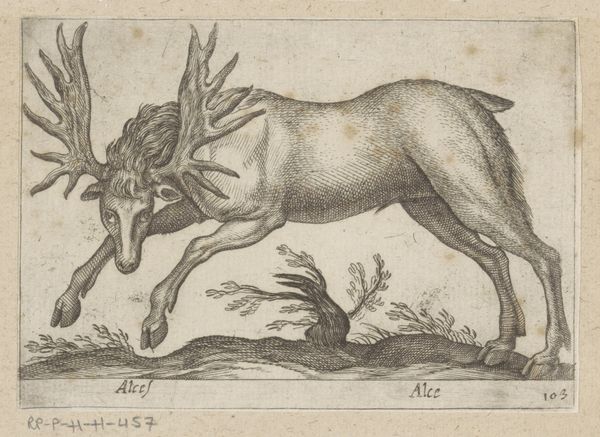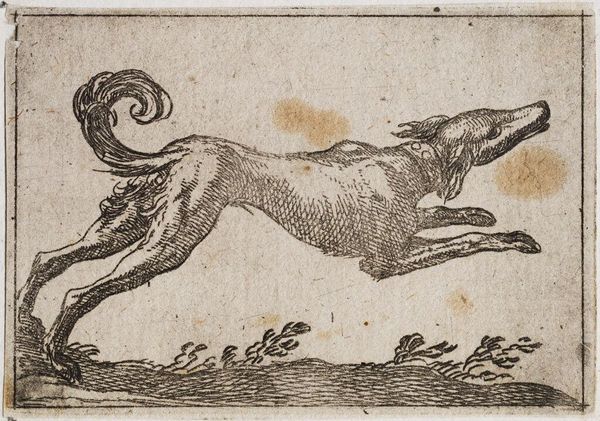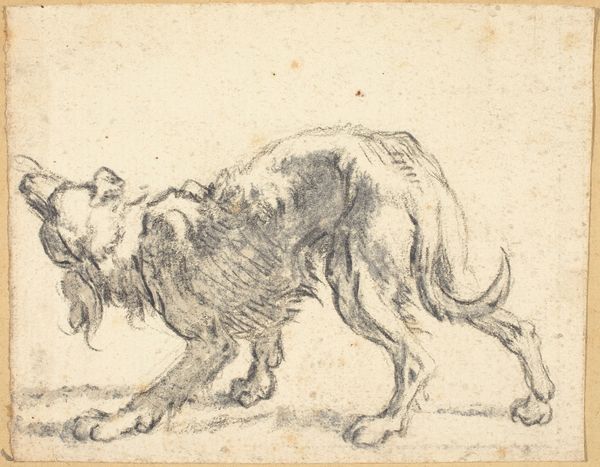
drawing, etching, ink
#
drawing
#
baroque
#
pen sketch
#
etching
#
figuration
#
ink
Dimensions: height 43 mm, width 67 mm
Copyright: Rijks Museum: Open Domain
Antonio Tempesta made this 'Standing Fox' sometime between 1576 and 1630 using the technique of etching. This printmaking method involves coating a metal plate with a waxy, acid-resistant substance, scratching an image into it, and then bathing the plate in acid. The acid bites into the exposed metal, creating lines that hold ink. Look closely, and you can see how Tempesta used carefully controlled marks to define the animal's form and texture. The density and direction of these lines create a sense of volume and shadow, bringing the fox to life on the page. The beauty of etching lies in its capacity for detail and nuance. It allowed artists like Tempesta to produce images with a handmade touch, but in multiples. This was crucial for disseminating visual information at a time before photography. Etchings like this one circulated widely, influencing other artists and shaping the visual culture of the period. They remind us that art is not just about individual expression, but also about the technologies and economies that make it possible.
Comments
No comments
Be the first to comment and join the conversation on the ultimate creative platform.
